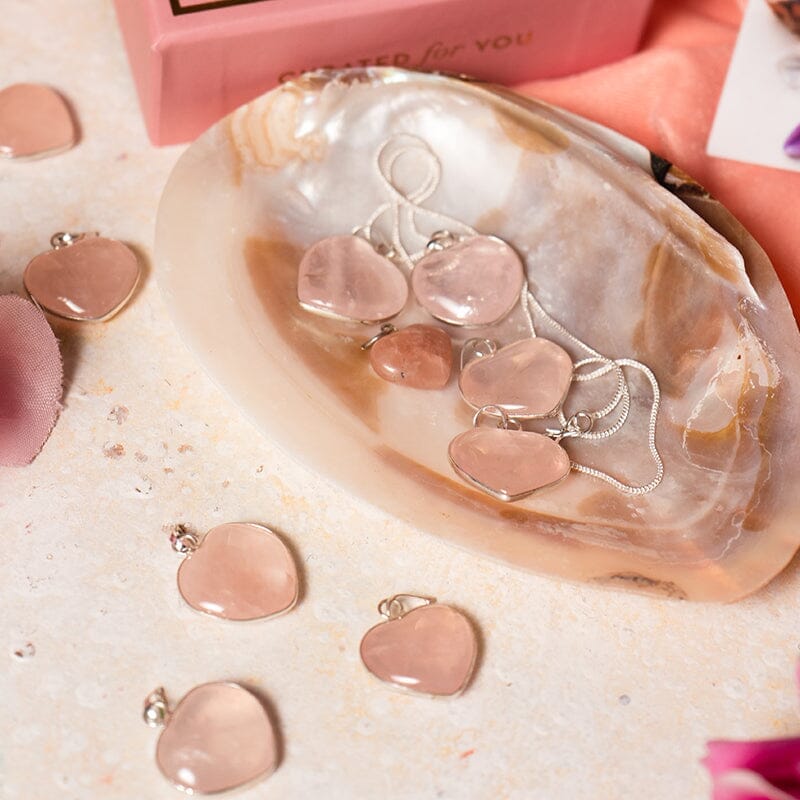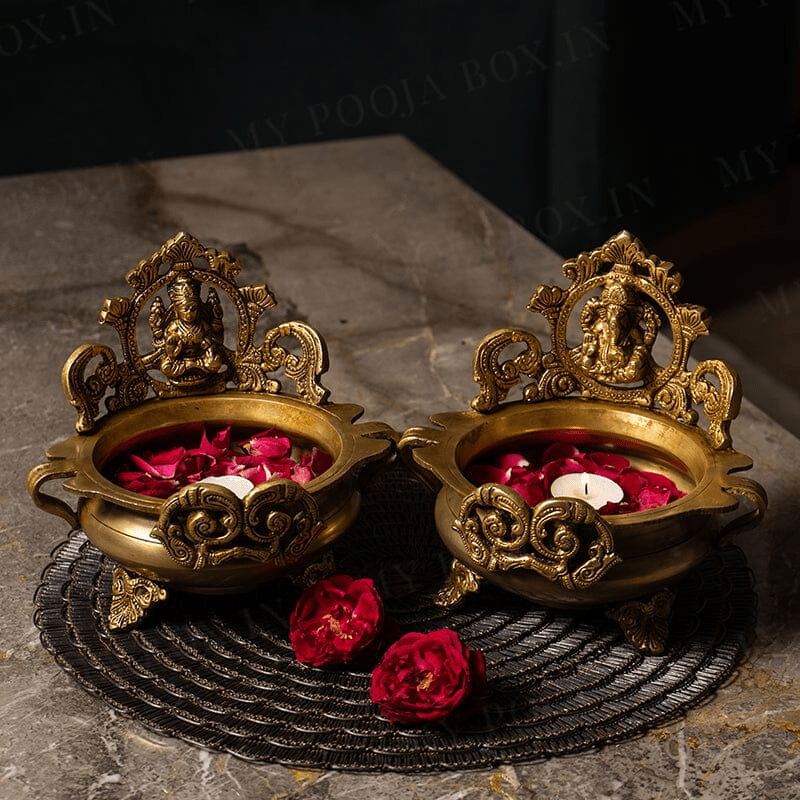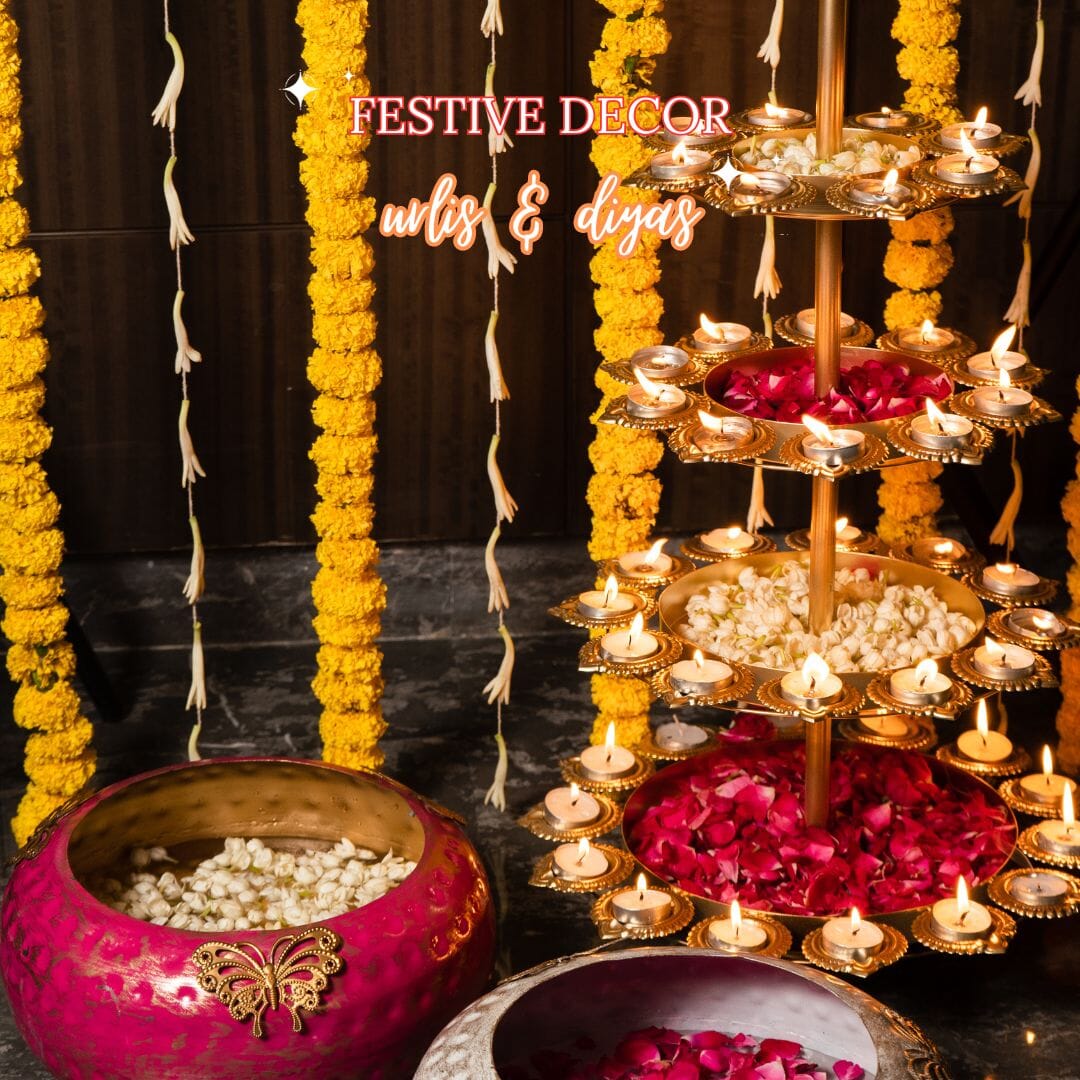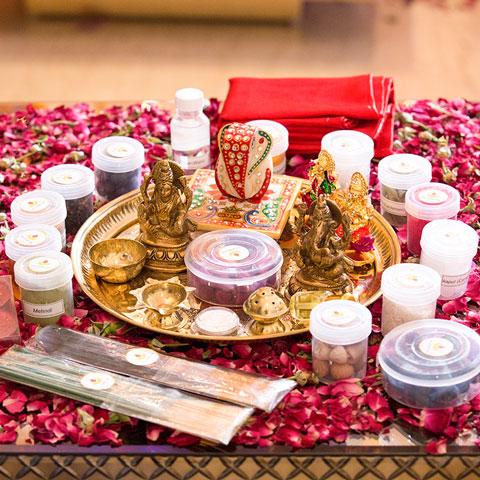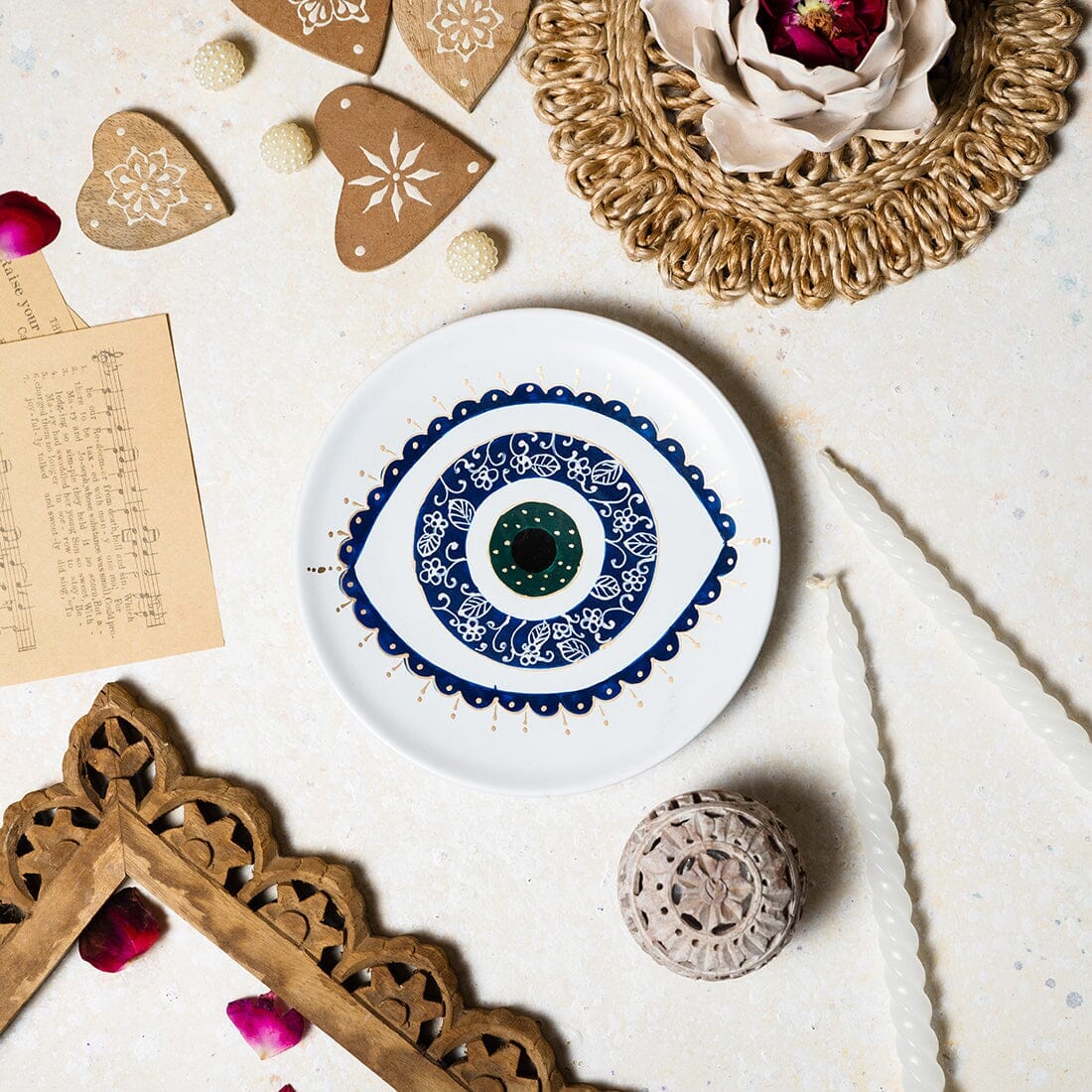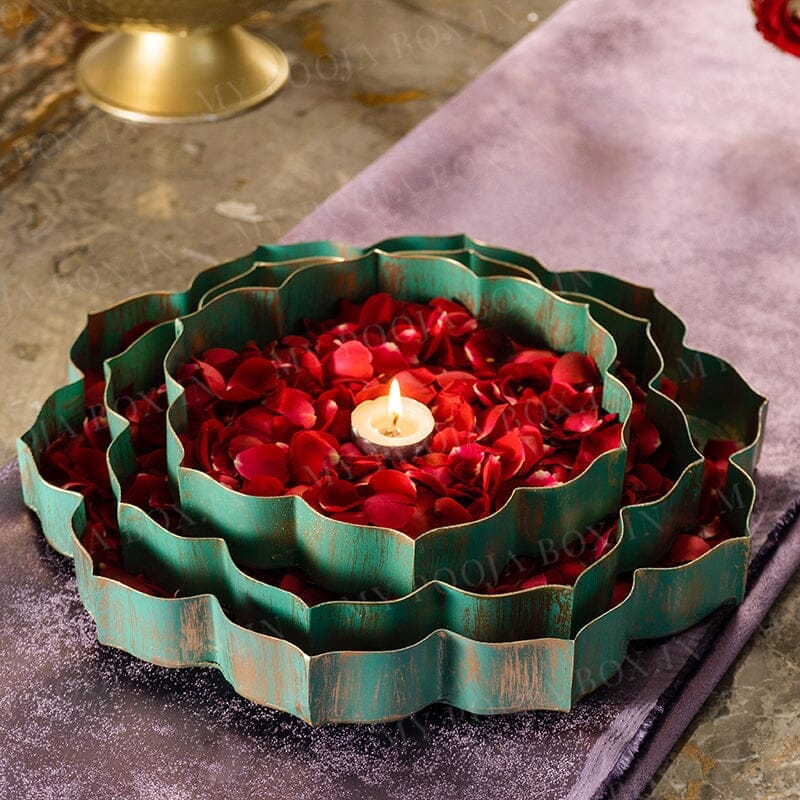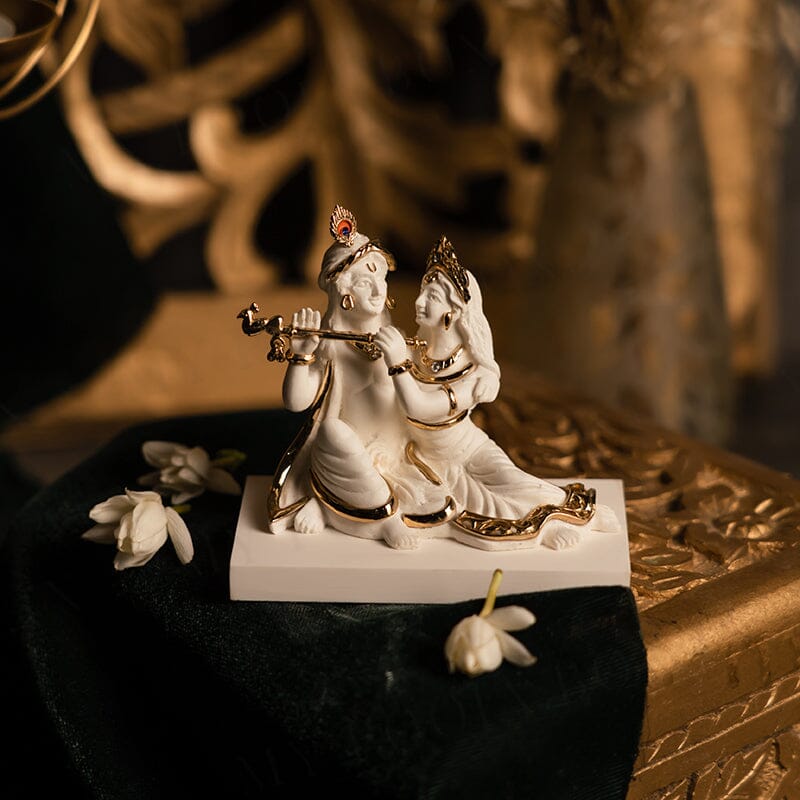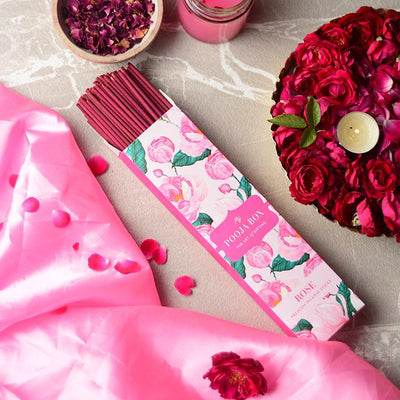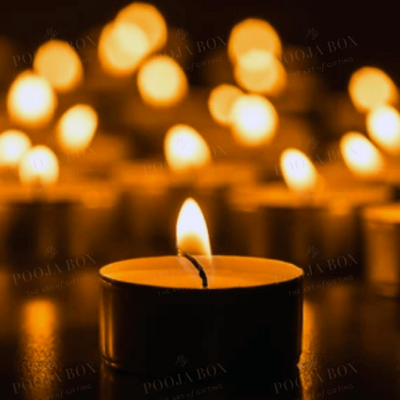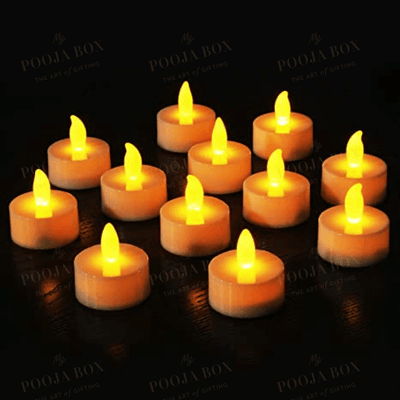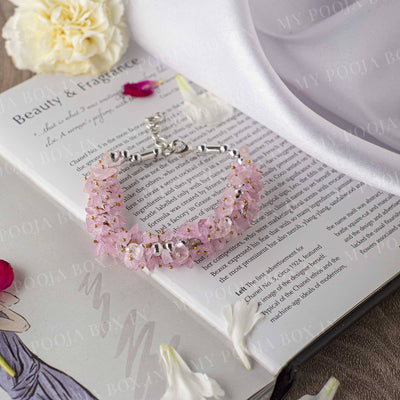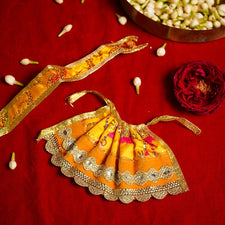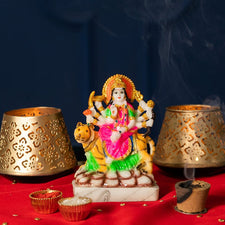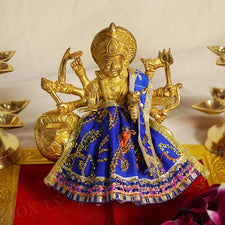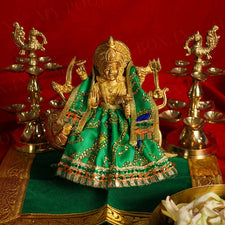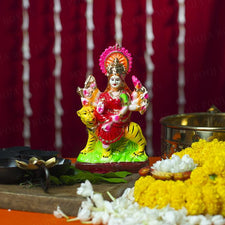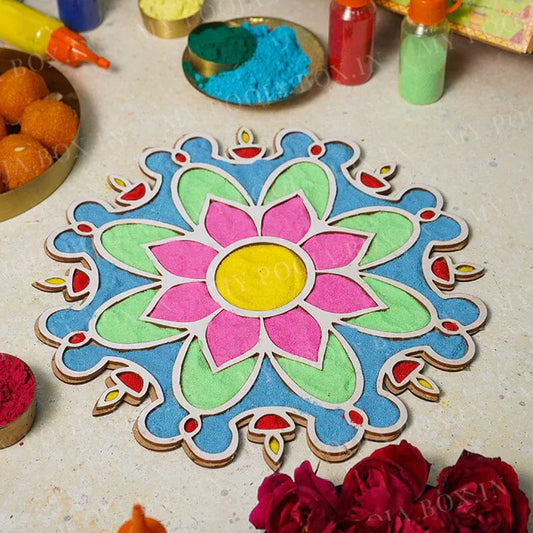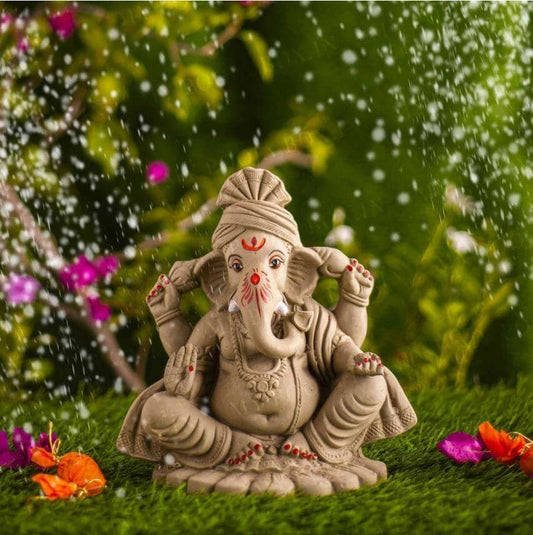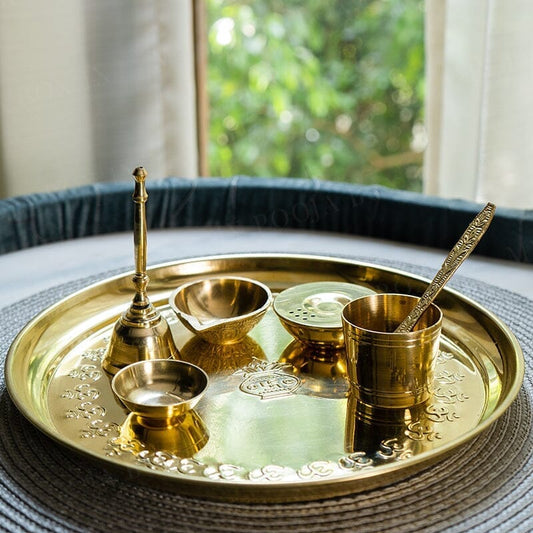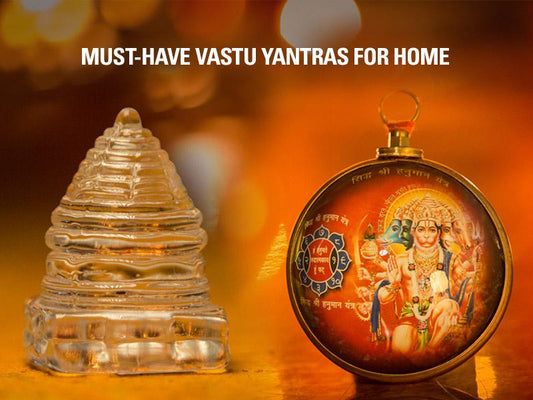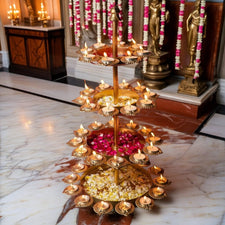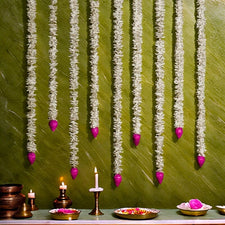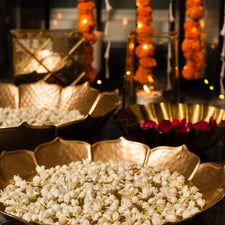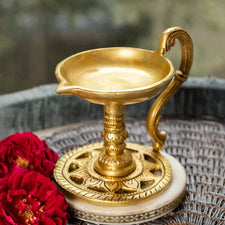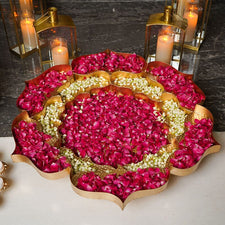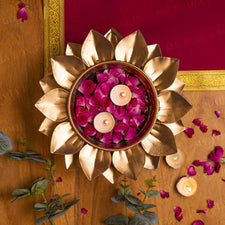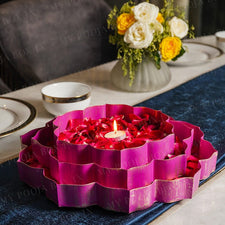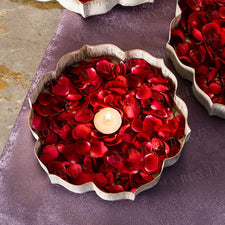Navratri is one of India's most well-known celebrations. Durga has grown in popularity as a result of her significance in Hindu mythology. Her most famous manifestations are commemorated for nine days, with each day dedicated to a different embodiment of hers. Throughout the festival, pujas (reverence through rituals and chanting) and fasting are undertaken, with specific emphasis paid to the attributes of each Goddess.
The name Navratri is made up of two words: "Nava," which means "nine," and "Ratri," which means "nights," and when put together, it represents nine days of joyful celebrations. This nine-day festival celebrates the triumph of good over evil, the restoration of dharma over adharma, the purification of negativities, and the cultivation of positivity and purity.
Goddess Durga, the female cosmic power, is worshipped, sung, and called in her nine forms throughout the Navaratri days. Maa Durga's various forms represent power, strength, bravery, knowledge, beauty, elegance, and auspiciousness.
9 Avatars of Goddess Durga -
These Durga Maa Navaratri avatars mentioned below are adored for nine days.
1. Shailaputri :-
The first day of Navratri is dedicated to Devi Shailaputri, who is one of the nine Devi names commemorated during the festival. The name Shailputri means "mountain's daughter (putri)" (Shaila). In diverse cultures, she is known by the names Sati, Bhavani, Parvati, and Hemwati, to mention a few. She is the absolute manifestation of the mighty Brahma, Vishnu, and Mahadev, and she is worshipped as such. An image of the Goddess is seen with a crescent moon on her forehead, a trident in her right hand, and a lotus in her left hand. She is mounted on a Nandi bull.
● Color to wear: The color orange is associated with the celebration of this form of Maa Durga. In addition to representing happiness, it also indicates passion, and success.

2. Brahmacharini :-
The second day is dedicated to the Goddess Brahmacharini. She is known as the Maa of sacrifice and discipline since her given name, Brahmacharini signifies the female who observes Brahmacharya, the Buddhist way of life (abandonment of earthly pleasures). With a Japa mala in her right hand and a kamandalu in her left, she walks barefoot. Grace, blissfulness, tranquility, and wealth are bestowed upon her worshipers by the Goddess.
●Color to wear: The color white is associated with Brahmacharini and represents purity, virginity, inner calm, and holiness.

3. Chandraghanta :-
The third day of Navratri is dedicated to the Goddess Chandraghanta. Chandraghanta is depicted with a half-moon shaped like a bell on her brow, which corresponds to the origin of her given name. After her marriage to Lord Shiva, she decorated her forehead with a half-moon symbol. On the third day of the festival, she is worshipped by her devotees for bringing them peace and success in their lives.
She is described as having ten hands and three eyes, and she mounts a tigress on her back. Her four left hands are occupied by Trishul, Gada, sword, and Kamadalu, while her fifth hand is occupied by Varadamudra, the Goddess of victory. A lotus flower, an arrow, Dhanush, and Japa mala are held in her right fourth hand, and her fifth right hand is held in Abhaya Mudra, which means "plenty."
● Color to wear: Wearing Red on the third day of Navratri represents passion, boldness, and sexuality and is, therefore, the color of choice for devotees on this day.

4. Kushmanda :-
The deity Kushmanda has the ability to live inside the scorching sun, which is how she got the name Kushmanda. She is credited with creating the universe with her magnificent and bright smile since she possesses a body as luminous as that of the sun. The significance of this Goddess during the festival of Navratri is that she bestows good health, strength, and strength upon those who worship her.
Ashtabhuja Devi is the name given to her since she is depicted with eight hands, hence the name. Each of her hands holds a trident, a discus, a sword (with hook and mace), a bow and arrows, two jars of honey, and a vial of blood. Her right hand is always in the Abhaya mudra position, in which she blesses all of her devotees. She travels on the back of a tiger.
●Color to wear: Wear royal blue on this day and adore the Goddess, representing luxury and wealth.

5. Skandamata :-
Skandamata, the mother of the war God Skanda, is commemorated on the fifth day of Navratri (Kartikey). In her lap, she holds the infant Lord Skanda, who she rides on the back of a fearsome lion. It is thought that she was chosen to be the commander in chief of the war against the demon, and as a result, she is also known as the "Goddess of Fire" in some places.
The imagery of this female God depicts her with four hands, holding a lotus blossom in each of her upper two hands, one hand in Abhaya Mudra, and one right hand holding Skanda, which she holds. Padmasani is the name given to her since she is frequently seen sitting on a lotus flower.
● Color to wear: Yellow is a joyful and energizing color to wear on this day since it will keep you feeling happy and motivated.

6. Katyayani :-
Katyayani is the sixth manifestation of Maa Durga, who is also known as Mahalaxmi. Katyayani was created to annihilate the bull demon Mahishasura. Anger, revenge, and eventual victory over evil are some of her most distinguishing attributes. The blessings of the Goddess are bestowed upon all those who remember her with a pure heart and unwavering faith. She is depicted with four hands, as though she were sitting on the back of a majestic lion. Her left hands hold a sword and a lotus, while her right hands are in Abhaya Mudra and Varada Mudra.
● Color to wear: The color green is connected with the beginning of a new chapter. It is worn in order to induce feelings of fertility and expansion.

7. Kalaratri :-
Kalaratri Maa has a black complexion, a ferocious soul, and a bold stance. Her large, blood-red eyes, protruding blood-red mouth, and claws distinguish her as the Goddess of Death. She is also known by the titles Kali Maa and Kalratri, which are both derived from the Hindu goddess Kali. With her scattered black hair and three round eyes, she is seen sitting on the back of a donkey. She possesses four pairs of hands. The right hand is in Abhaya Mudra and Varada Mudra, and the left-hand holds a sword and an iron hook.
● Color to wear: The color grey is being worn on this particular day. It brings the energy back into balance and keeps the people grounded.

8. Mahagauri :-
Mahagauri is the eighth form of Goddess Durga, and she is considered to be the most beautiful of the nine forms. Her beauty is as pure as a pearl's radiance. Because she is the Goddess of purity, cleanliness, endurance, and serenity, any imperfections or mistakes made by her worshippers are burned to ashes. Mahagauri is a four-armed creature. With her right hand, she maintains the position of alleviating suffering while holding the trident in her lower left hand. Her top left arm is holding a tambourine, while her lower left arm is extending blessings to the world.
● Color to wear: Wearing purple during Mahagauri puja symbolizes riches, royalty, and power.

9. Siddhidatri :-
Siddhidatri is endowed with inherent healing abilities. She is in a blissfully joyful and charming stance as she sits on the floor. She is the Goddess Siddhidatri, and she travels on a lotus, a tiger, or a lion, depending on the situation. She possesses four pairs of hands. Her hands are clasped together with Gada and chakram in the other. Both have lotus flowers and shankhas on their shankha stems.
● Color to wear: Wearing the hue peacock green will help you to demonstrate grace, integrity, and watchfulness on this day.

Conclusion:-
Worshiping Maa Durga during the sacred festival of Navratri possesses the ability to transform the lives of the worshipper magically. So, if you are looking forward to buying the necessary Navratri puja samagri or handcrafted Maa Durga idols, MyPoojaBox is the best online website.
Navratri presents a wonderful way to wish your family and friends a happy Navratri. Have a wonderful Navratri..!
Related Articles :
How to do Navratri puja at Home?
